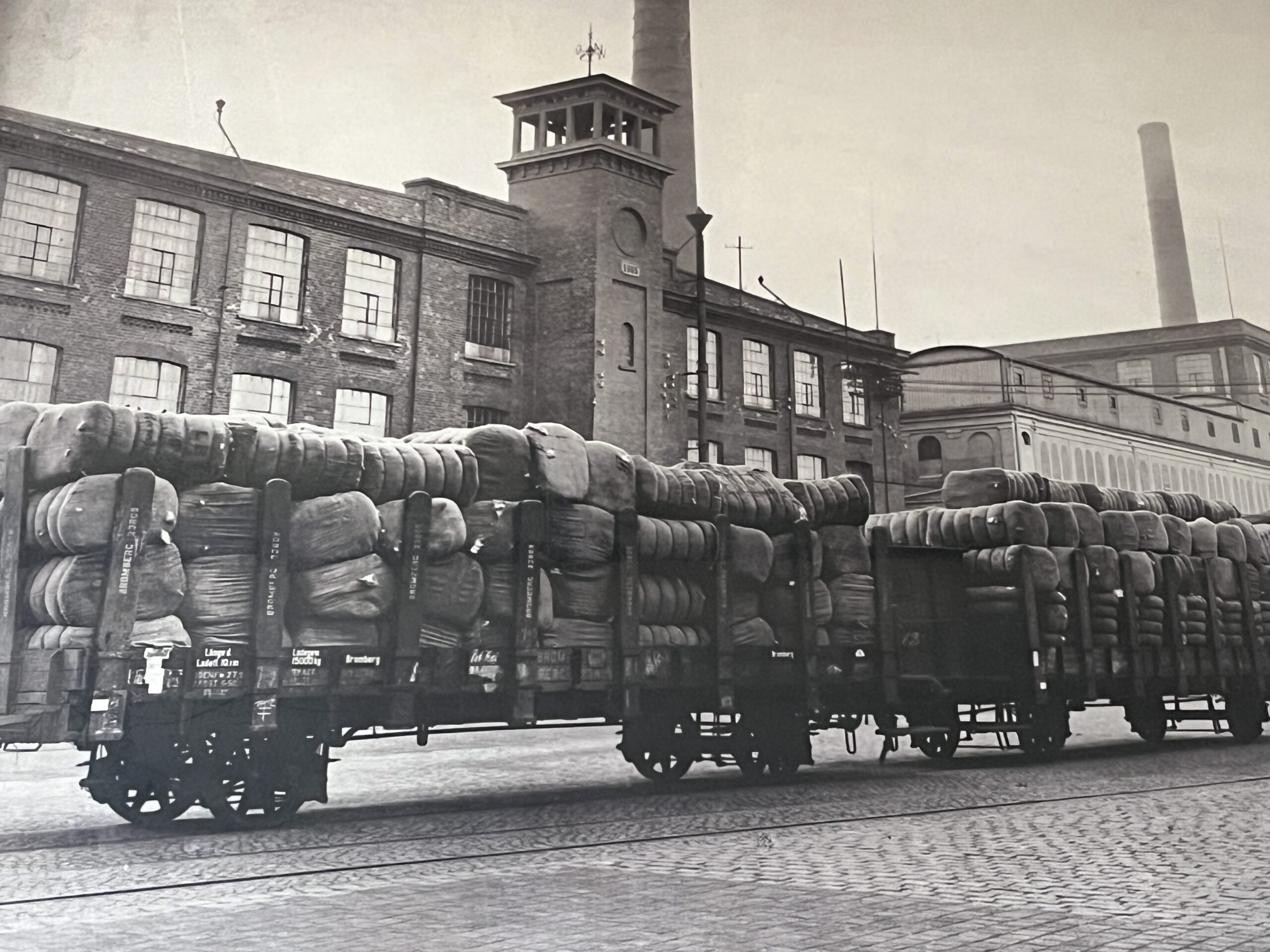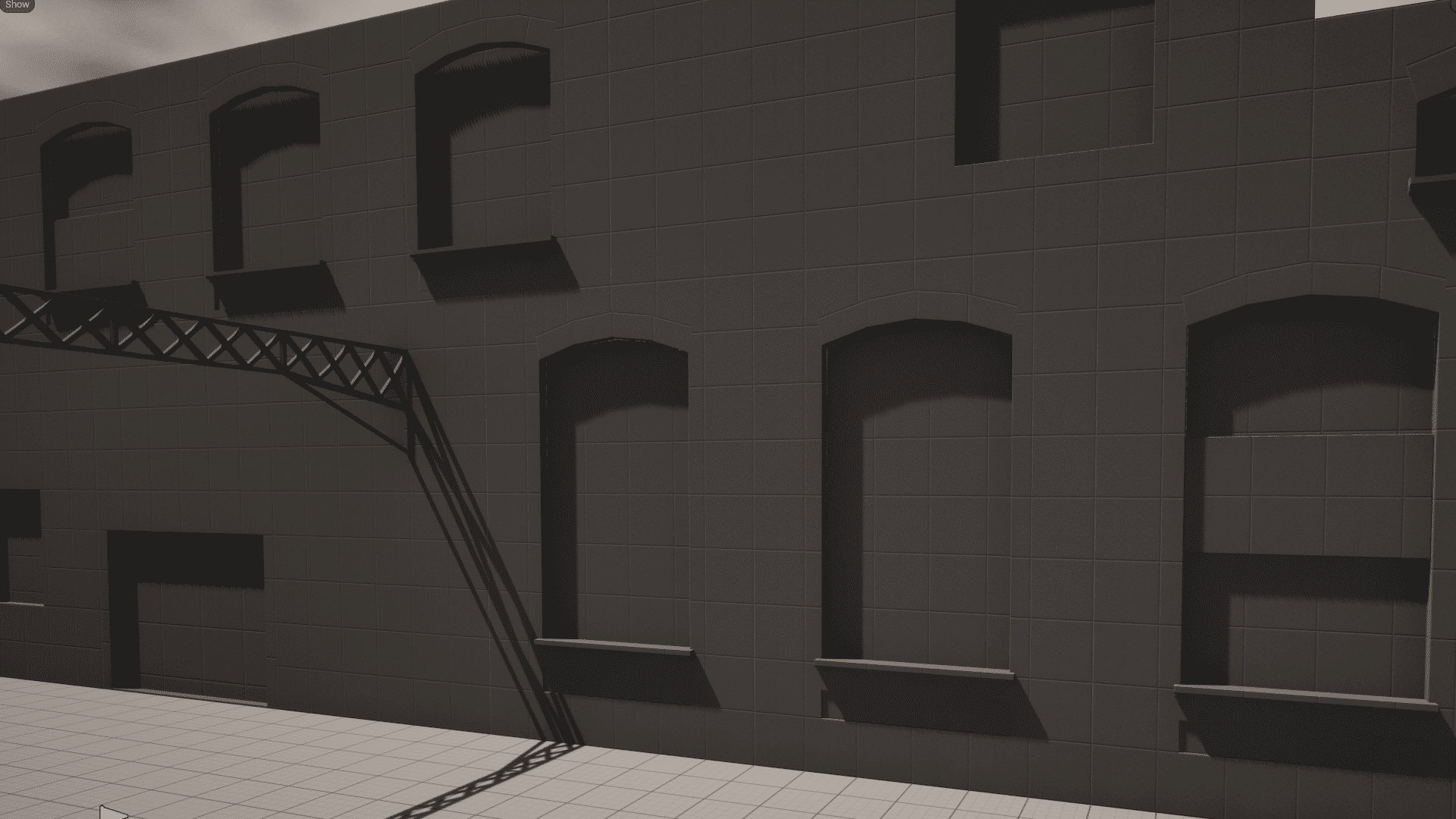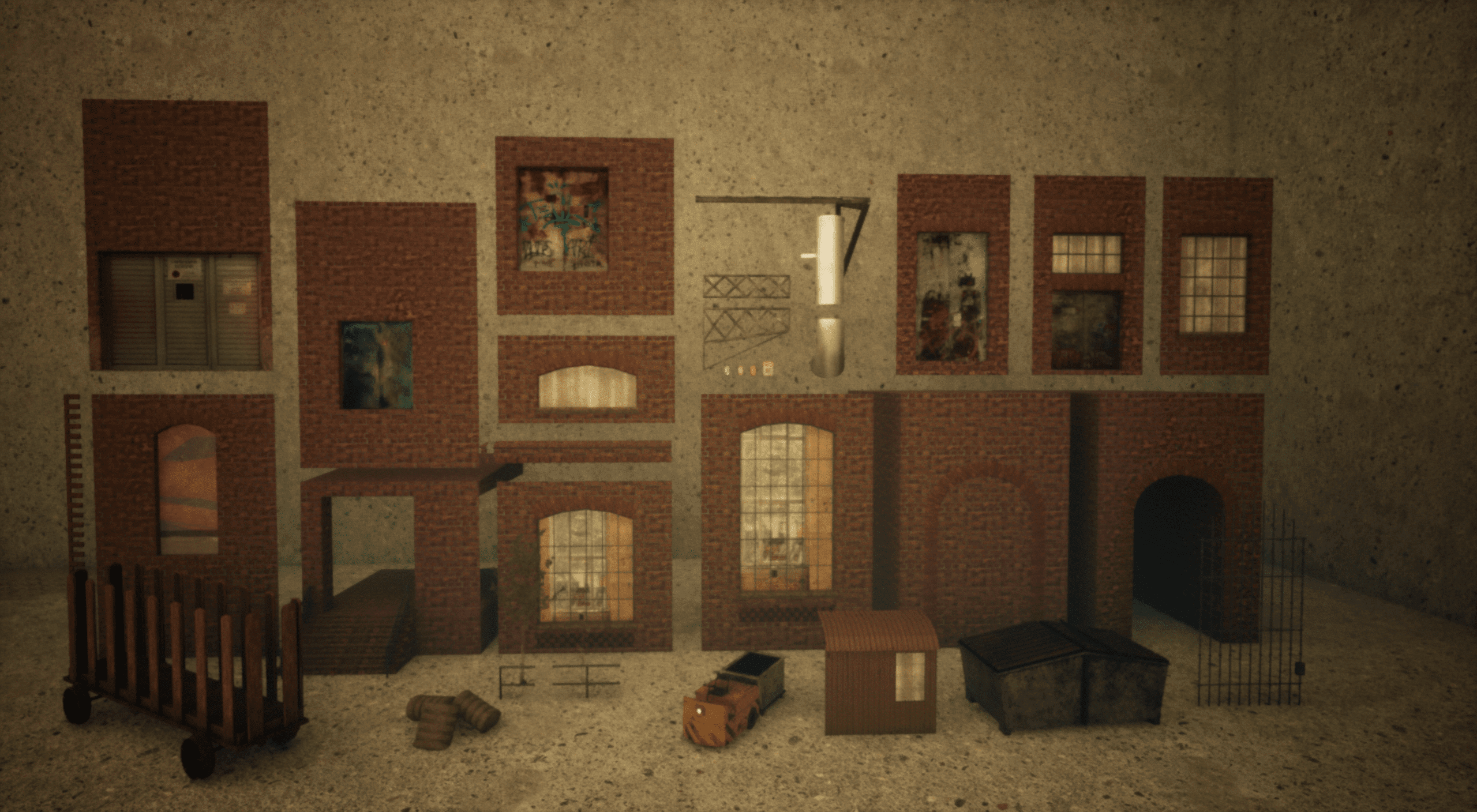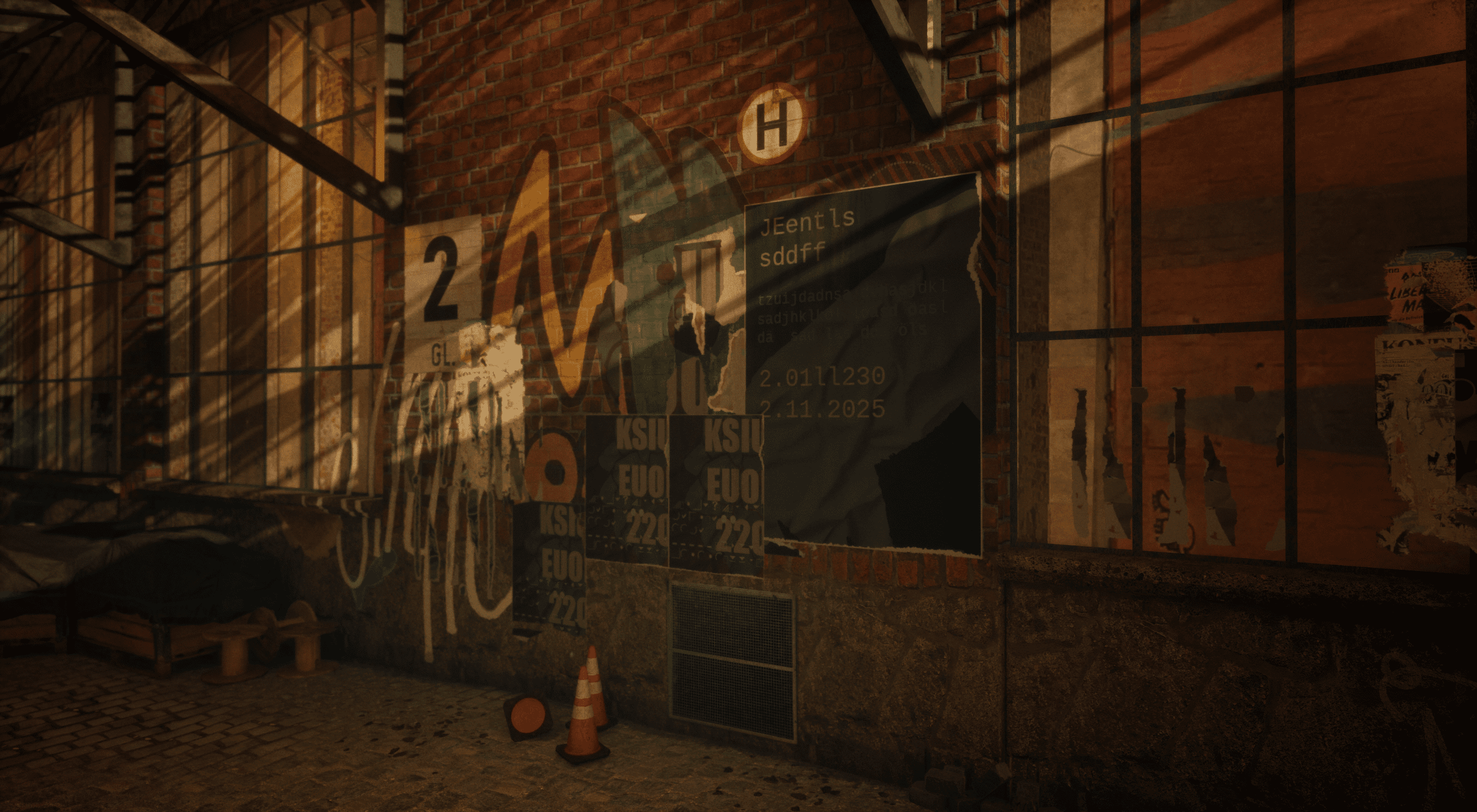Research
Part of the research was not only the analysis of the architecture but also engaging with the history of the site. For this, I visited the permanent exhibition on-site, looked at old building plans, and participated in a guided tour.
Here you can see an image of the old wagons used to transport cotton. (Taken from the exhibition Archiv-Massiv at the Leipziger Baumwollspinnerei.)
Planing the Buildings
I defined the size of the environment and divided the buildings into modules to create an overview of the assets needed before jumping into the modeling.
Block out
The next step was to check if the modules worked well with each other and if the scale of the whole level needed any adjustments. I first created a blockout using Maya and Unreal Engine.
Adding Detail and Textures
Once the position and dimensions of the modules were set, I could add detail and apply textures. I also modeled some additional assets, such as garbage containers, wagons, and small carts.
Cotton Buds
One of the most exciting parts of the project was creating the cotton plants. For that, I sculpted the cotton buds using ZBrush and integrated them into a plant using SpeedTree.
Graffitti and Decals
Since graffiti is an important identifying feature of the spinning mill, it was crucial that I had several graffiti illustrations. First, I drew them on paper, scanned the images, edited them in Photoshop, and then used them as decals for my level. I also created decals from photos for the track and gate signage on the walls.
Gameplay
The level features a collection gameplay mechanic. The goal is to collect cotton buds, each providing a fun fact about the spinning mill. Once all the buds are collected, access is granted to a small courtyard where a cotton yarn can be collected, and the game is then completed. The implementation of this gameplay mechanic was only possible with the use of Blueprints inside of Unreal Engine.






